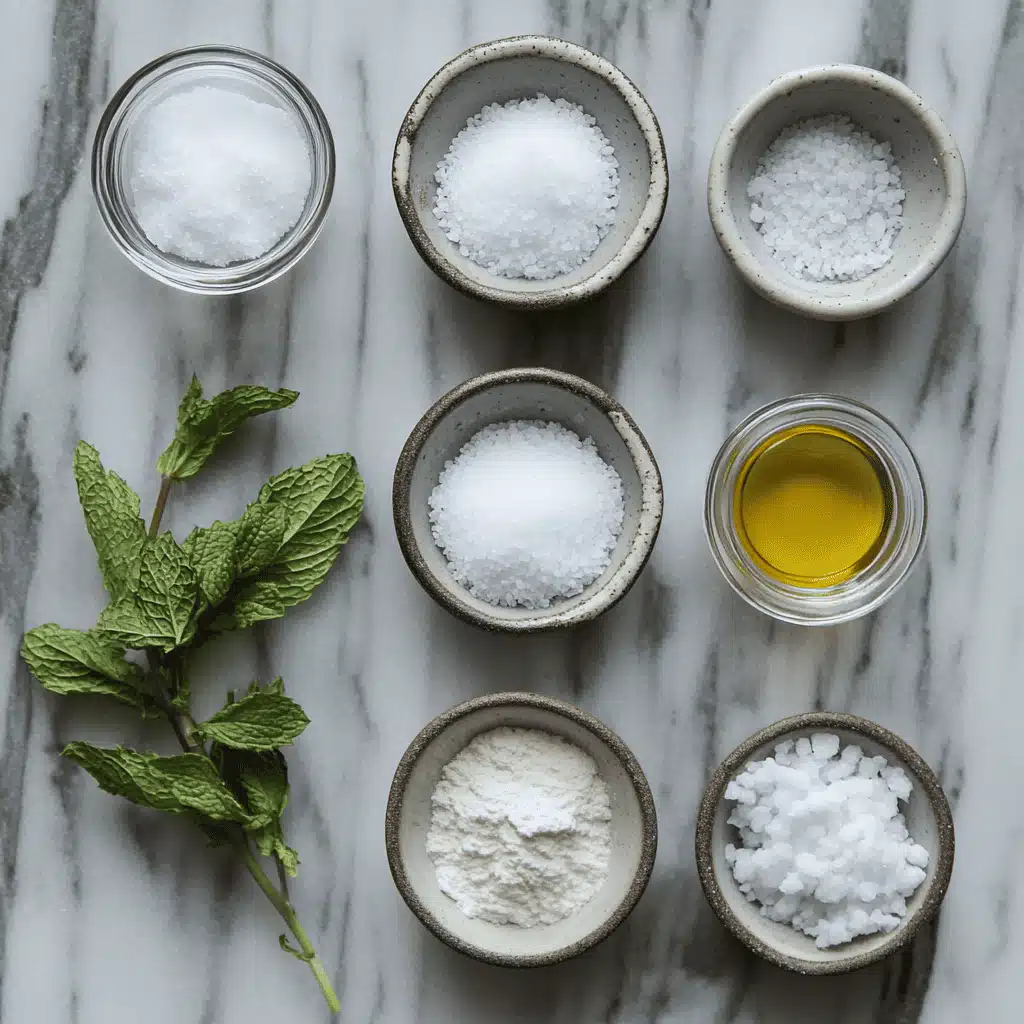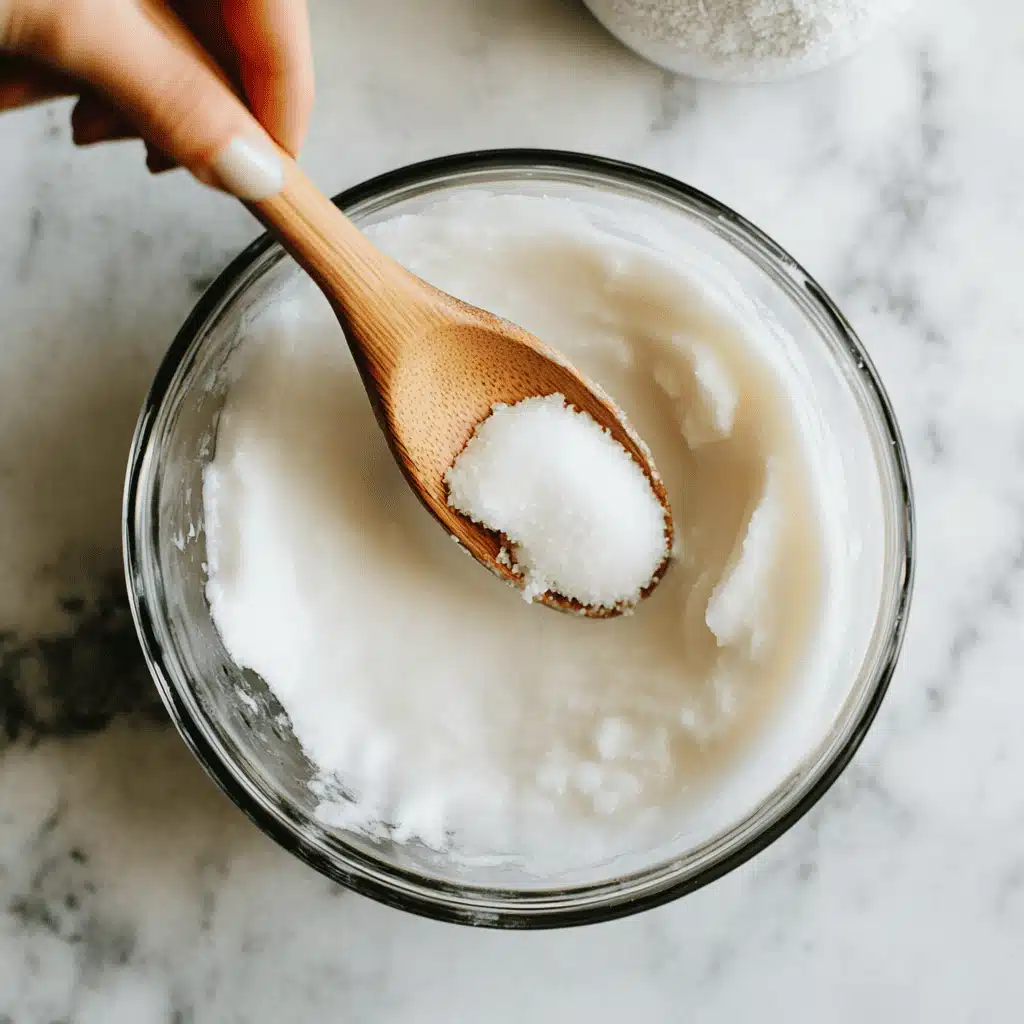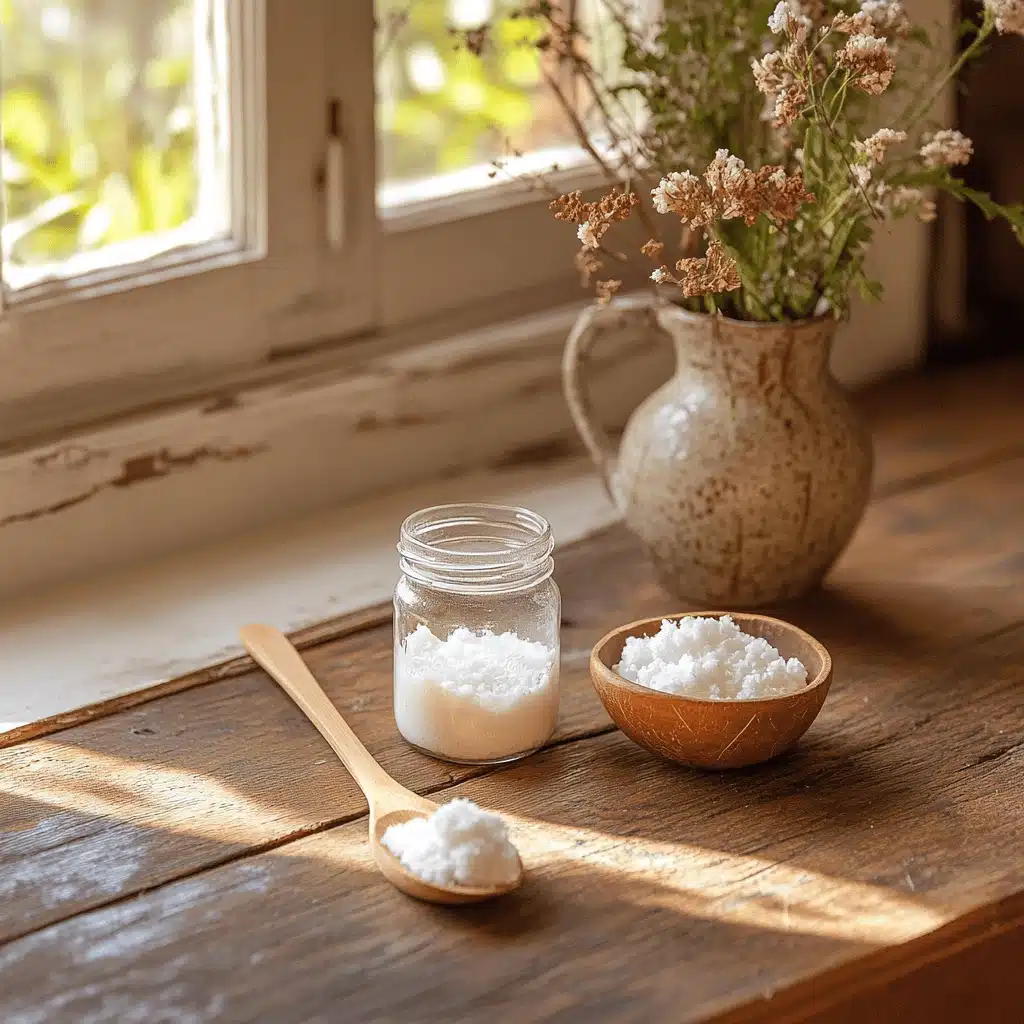There’s something grounding about knowing exactly what goes into the things you use every day. A toothpaste recipe might seem simple, but it can tell a bigger story—about health, self-reliance, and keeping life connected to the basics. For folks like me, living just outside the Catskills with a pantry full of garden-grown and foraged goods, whipping up homemade essentials is second nature. Crafting your own toothpaste recipe lets you avoid questionable ingredients, cut down on plastic, and still get that clean, fresh-mouth feel. In this article, I’ll walk you through my go-to methods, why they work, and how this small change made a big difference in our homestead routine.
Table of Contents
Toothpaste recipe: Make your own natural paste at home
- Total Time: 5 minutes
- Yield: 1 small jar 1x
- Diet: Vegan
Description
A simple and effective homemade toothpaste recipe using pantry staples like baking soda, coconut oil, and essential oils.
Ingredients
2 tbsp baking soda
2 tbsp coconut oil (softened)
10 drops peppermint essential oil (optional)
1 tbsp bentonite clay (optional for mineral version)
1/2 tsp sea salt (optional)
Instructions
Combine baking soda and coconut oil in a glass bowl.
Mix until a smooth, thick paste forms.
Stir in peppermint essential oil if desired.
Transfer to a jar with a lid and store at room temperature.
For powdered version: mix dry ingredients, store in sealed jar, use dry.
Notes
Use a clean spoon to scoop paste—don’t dip toothbrush directly into the jar.
Store paste version for 2–3 weeks; powder version can last 2–3 months.
Always consult your dentist if switching from commercial paste.
- Prep Time: 5 minutes
- Cook Time: 0 minutes
- Category: Toothpaste
- Method: Stirred
- Cuisine: Homestead DIY
Nutrition
- Serving Size: 1/2 tsp
- Calories: 0
- Sugar: 0g
- Sodium: 10mg
- Fat: 1g
- Saturated Fat: 0.8g
- Unsaturated Fat: 0.2g
- Trans Fat: 0g
- Carbohydrates: 0g
- Fiber: 0g
- Protein: 0g
- Cholesterol: 0mg
Keywords: toothpaste recipe, homemade toothpaste, baking soda toothpaste
The Roots of DIY Toothpaste
Where Homemade Toothpaste Comes From
Long before commercial tubes filled with synthetic foaming agents lined the shelves, people were using their own version of a toothpaste recipe. In ancient Egypt around 5,000 BC, the earliest known formula included powdered salt, burnt eggshells, and crushed rock for grit. Romans added charcoal and bark. In China, a mix of herbal powders and mints was common. These were the early ancestors of what we now call homemade toothpaste.
For centuries, people turned to powders made from baking soda, salt, or crushed herbs. They’d moisten the mix with a bit of water before brushing. It was only in the 1800s that paste-style toothpaste began to show up—still homemade, but thicker and smoother. By the late 1800s, the first squeezable toothpaste tube was introduced, changing the way people used their trusted toothpaste recipe.
A Personal Twist on History
One cold January morning, our store-bought paste ran out. The road was snowed in, and I wasn’t about to shovel my way to a store for something I could make better at home. I mixed baking soda, coconut oil, and peppermint extract in a mason jar. It was gritty and honest—exactly what you’d expect from a true toothpaste recipe born out of necessity.
I’ve since tried variations—some with bentonite clay, others with ground cloves or salt—but that first jar is still my favorite. It taught me that homemade doesn’t have to mean messy or uncertain. It can be simple, safe, and even better than what you’d buy.
If you’re curious how powdered versions compare, take a peek at my powdered toothpaste recipe—a great place to start if you’re easing into the DIY world with something clean and shelf-stable.
Simple Toothpaste Recipe Variations

Basic Baking Soda + Coconut Oil Paste
If you’re new to DIY dental care, this basic toothpaste recipe is the easiest place to begin. It takes just three ingredients and about five minutes to pull together. No fancy tools, no hard-to-pronounce chemicals—just clean, functional ingredients straight from the kitchen.
Ingredients:
- 2 tablespoons baking soda
- 2 tablespoons coconut oil (softened)
- 10 drops peppermint essential oil (optional)
Instructions:
- Combine baking soda and coconut oil in a small glass bowl.
- Mix with a spoon until it forms a smooth, thick paste.
- Stir in peppermint oil if using, for flavor and freshness.
- Store in a small jar with a tight-fitting lid.
To use this toothpaste recipe, dip a clean spoon into the jar and spread a pea-sized amount on your toothbrush. Brush gently—baking soda is a natural abrasive, but you don’t need to scrub hard. This version leaves your mouth feeling fresh and teeth looking polished. It’s the one I go back to again and again.
If you’ve ever wondered how baking soda affects your enamel, you’ll appreciate the breakdown in my guide on how to brush teeth with baking soda. It’s a great resource for brushing safely and getting the most out of your homemade toothpaste.
Alternative Powder Recipes (Salt, Clay, Herbal)
Powdered pastes aren’t just old-fashioned—they’re versatile and long-lasting. This toothpaste recipe doesn’t need refrigeration and is perfect for storing in your pantry or packing on a trip.
Ingredients:
- 1 tablespoon bentonite clay
- 1 tablespoon baking soda
- ½ teaspoon fine sea salt
- 1 teaspoon ground clove or cinnamon
- Optional: a few drops of essential oil added when mixing
Instructions:
- Mix all dry ingredients in a bowl.
- Store in a clean, dry jar with a lid.
- To use, dip a damp toothbrush into the powder and brush as usual.
This version has a mineral-rich profile that feels good on your gums and doesn’t melt in warm weather. It’s a shelf-stable twist on the modern toothpaste recipe, and you can customize it with flavors or herbs you love.
Looking for something even simpler? My powdered toothpaste recipe breaks it down to basics using ingredients you probably already have. I keep a small jar of this on our bathroom shelf and another in our travel kit.
Whether you prefer a smooth coconut oil paste or a dry mix that packs a mineral punch, the beauty of a homemade toothpaste recipe is that it’s yours. You control every ingredient, every ratio, and every scent.

Making Toothpaste Recipe Work
Ingredients Breakdown: What Each Does
Each homemade toothpaste recipe works because its ingredients pull real weight. They aren’t fillers—they clean, polish, and even freshen breath in their own honest ways.
- Baking soda: It’s the base of most natural recipes for a reason. Baking soda gently scrubs away plaque and neutralizes acids in the mouth. It’s mildly abrasive, so it gives that smooth post-brush feel without damaging enamel—if used with care. Want to get deeper into it? Read about its benefits in brush teeth with baking soda where I explain its cleansing power and safety tips.
- Coconut oil: Besides giving your toothpaste recipe a smooth texture, coconut oil may reduce harmful bacteria. It doesn’t foam like commercial pastes, but it binds ingredients and holds everything together.
- Sea salt: In small amounts, salt acts as a natural disinfectant and scrub. It boosts gum health and adds a mineral-rich layer to your recipe.
- Bentonite clay: Often used in powdered mixes, this clay is rich in calcium, magnesium, and silica. It helps bind toxins and gives the paste a gentle polish.
- Essential oils: Peppermint adds a refreshing taste and a mild antimicrobial effect. Tea tree oil can do the same, though some folks find its flavor strong.
These aren’t just optional extras. Every component has a job. When you create a toothpaste recipe at home, you’re building it from the ground up to meet your needs.
Texture, Taste & Safety Tips
Texture is one of the biggest hurdles for folks trying a homemade toothpaste recipe for the first time. Some mixes are gritty. Others separate if left in a warm room. But don’t toss the jar just yet—most of these issues are easy to fix.
- Too runny? Add a pinch of clay or baking soda.
- Too gritty? Stir longer or add a small splash of water.
- Too salty or bitter? A drop of stevia or cinnamon oil can smooth it out.
Shelf life matters too. A baking soda-and-oil blend will last 2–3 weeks at room temperature, longer if kept cool. Dry powders keep for months in a sealed jar.
And yes, it really does work. I’ve used a homemade toothpaste recipe for years and never looked back. The freshness is real, and you skip the artificial foaming agents entirely.
You might even find you enjoy the feeling more than store-bought paste. It’s a small shift, but one that can ripple through your daily routine.
If you’re still a little unsure, take a look at baking soda on carpet—another spot where this humble ingredient shines. It’s a reminder that what’s good for cleaning often works wonders in the bathroom too.
FAQs & Real Talk
What is the best homemade toothpaste?
The best homemade toothpaste recipe is the one that fits your needs and uses safe, simple ingredients. For most folks, a mix of baking soda, coconut oil, and peppermint essential oil works beautifully. It’s effective, affordable, and free of synthetic additives. For longer shelf life or added minerals, powdered versions using clay or salt also work great.
What are the ingredients to make toothpaste?
A basic toothpaste recipe includes baking soda (for cleaning), a base like coconut oil or water, and flavoring such as peppermint oil. Some add bentonite clay for texture or salt for extra minerals. Optional ingredients include stevia for sweetness or activated charcoal for whitening (used carefully).
What is the oldest recipe for toothpaste?
The oldest recorded toothpaste recipe dates back to ancient Egypt. It combined crushed rock salt, mint, dried iris flower, and pepper into a powder used to scrub teeth. Despite the harshness, it was surprisingly effective and even closer to modern formulations than people think.
Does homemade toothpaste really work?
Yes, when made and used properly, homemade toothpaste works very well. It cleans teeth, neutralizes acids, and freshens breath without artificial ingredients. Just make sure to brush gently, avoid over-abrasion, and keep up with dental checkups. A simple toothpaste recipe can absolutely be part of a healthy routine.
Conclusion
Homemade toothpaste isn’t just about ditching store-bought tubes—it’s about knowing what goes into your body and making thoughtful choices. A good toothpaste recipe doesn’t need more than a handful of ingredients, a jar, and a little stirring. Whether you go with a smooth coconut oil blend or a dry herbal powder, the benefits add up: less plastic waste, no harsh chemicals, and a whole lot of satisfaction.
Give it a try. Experiment a little. Maybe you’ll find that brushing your teeth with something you made by hand feels more honest, more personal, and just right.
📌 Follow along or tag me here:
Facebook: Recipes NYC on Facebook
Pinterest: @Recipes_NYC on Pinterest
Medium: https://medium.com/@recipesnyc

